Related Research Articles
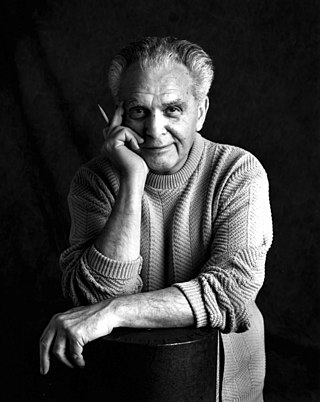
Jack Kirby was an American comic book artist, widely regarded as one of the medium's major innovators and one of its most prolific and influential creators. He grew up in New York City and learned to draw cartoon figures by tracing characters from comic strips and editorial cartoons. He entered the nascent comics industry in the 1930s, drawing various comics features under different pen names, including Jack Curtiss, before ultimately settling on Jack Kirby. In 1940, he and writer-editor Joe Simon created the highly successful superhero character Captain America for Timely Comics, predecessor of Marvel Comics. During the 1940s, Kirby regularly teamed with Simon, creating numerous characters for that company and for National Comics Publications, later to become DC Comics.

"Fourth World" was a metaseries of connected comic book titles written and drawn by Jack Kirby and published by DC Comics from 1970 to 1973. Although they were not marketed under this title until the August–September 1971 issues of New Gods and Forever People, the terms Fourth World and Jack Kirby's Fourth World have gained usage in the years since. Kirby created the Fourth World concept in the 1970s. The series is a science-fiction based mythology that revolves around ancient space deities known as the New Gods. The New Gods are similar to the gods of Earth lore.
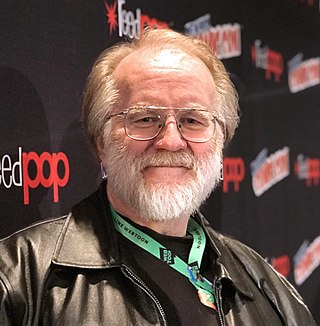
John Lindley Byrne is a British-born American writer and artist of superhero comics. Since the mid-1970s, Byrne has worked on many major superheroes; with noted work on Marvel Comics's X-Men and Fantastic Four. Byrne also facilitated the 1986 relaunch of DC Comics's Superman franchise with the limited series The Man of Steel, the first issue of which featured the comics' first variant cover.

George Pérez was an American comic book artist and writer, who worked primarily as a penciller. He came to prominence in the 1970s penciling Fantastic Four and The Avengers for Marvel Comics. In the 1980s he penciled The New Teen Titans, which became one of DC Comics' top-selling series. He penciled DC's landmark limited series Crisis on Infinite Earths, followed by relaunching Wonder Woman as both writer and penciller for the rebooted series. In the meantime, he worked on other comics published by Marvel, DC, and other companies into the 2010s. He was known for his detailed and realistic rendering, and his facility with complex crowd scenes.
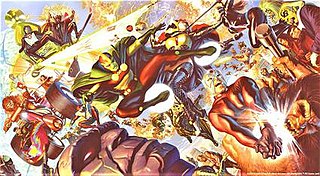
The New Gods are a fictional extraterrestrial race appearing in the eponymous comic book series published by DC Comics, as well as selected other DC titles. Created and designed by Jack Kirby, they first appeared in February 1971 in New Gods #1.
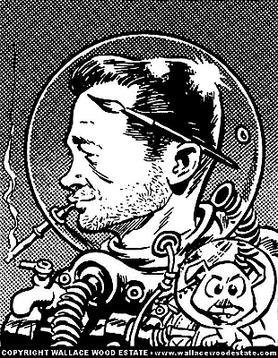
Wallace Allan Wood was an American comic book writer, artist and independent publisher, widely known for his work on EC Comics's titles such as Weird Science, Weird Fantasy, and MAD Magazine from its inception in 1952 until 1964, as well as for T.H.U.N.D.E.R. Agents, and work for Warren Publishing's Creepy. He drew a few early issues of Marvel's Daredevil and established the title character's distinctive red costume. Wood created and owned the long-running characters Sally Forth and Cannon.
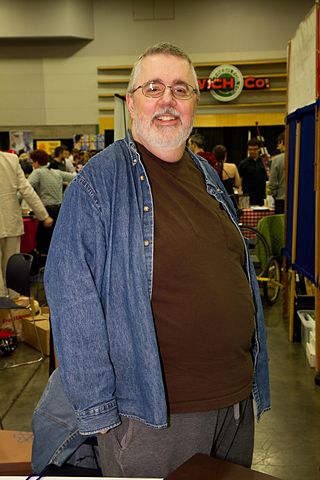
Kurt Busiek is an American comic book writer. His work includes the Marvels limited series, his own series titled Astro City, a four-year run on The Avengers, Thunderbolts and Superman.

Nelson Alexander Ross is an American comic book writer and artist known primarily for his painted interiors, covers, and design work. He first became known with the 1994 miniseries Marvels, on which he collaborated with writer Kurt Busiek for Marvel Comics. He has since done a variety of projects for both Marvel and DC Comics, such as the 1996 miniseries Kingdom Come, which Ross co-wrote. Since then he has done covers and character designs for Busiek's series Astro City, and various projects for Dynamite Entertainment. His feature film work includes concept and narrative art for Spider-Man (2002) and Spider-Man 2 (2004), and DVD packaging art for the M. Night Shyamalan film Unbreakable (2000). He has done covers for TV Guide, promotional artwork for the Academy Awards, posters and packaging design for video games, and his renditions of superheroes have been merchandised as action figures.

Orion is a fictional superhero appearing in comic books published by DC Comics. He is the son of Darkseid and half-brother of Kalibak and Grayven who was traded to Highfather as part of a peace deal between Apokolips and New Genesis. Since then, Orion has assisted the New Gods of New Genesis against his father and was also a member of the Justice League.

Walter Simonson is an American comic book writer and artist, best known for a run on Marvel Comics' Thor from 1983 to 1987, during which he created the character Beta Ray Bill. He is also known for the creator-owned work Star Slammers, which he inaugurated in 1972 as a Rhode Island School of Design thesis. He has also worked on other Marvel titles such as X-Factor and Fantastic Four, on DC Comics books including Detective Comics, Manhunter, Metal Men and Orion, and on licensed properties such as Star Wars, Alien, Battlestar Galactica and Robocop vs. Terminator.
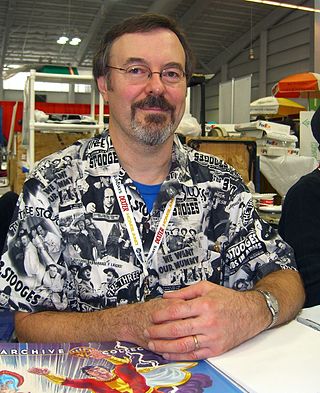
Jeremiah Joseph Ordway is an American writer, penciller, inker and painter of comic books.
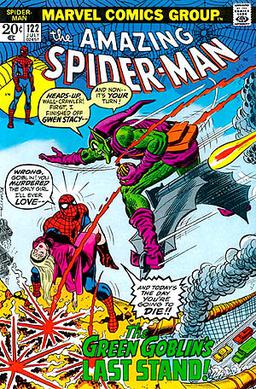
The Bronze Age of Comic Books is an informal name for a period in the history of American superhero comic books, usually said to run from 1970 to 1985. It follows the Silver Age of Comic Books and is followed by the Modern Age of Comic Books.

Murphy C. Anderson Jr. was an American comics artist, known as one of the premier inkers of his era, who worked for companies such as DC Comics for over fifty years, starting in the Golden Age of Comic Books in the 1940s. He worked on such characters as Hawkman, Batgirl, Zatanna, the Spectre, and Superman, as well as on the Buck Rogers daily syndicated newspaper comic strip. Anderson also contributed for many years to PS, the preventive maintenance comics magazine of the U.S. Army.
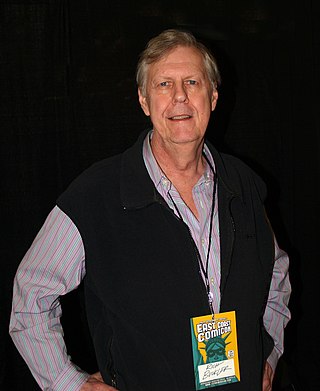
Rich Buckler was an American comics artist and penciller, best known for his work on Marvel Comics' Fantastic Four in the mid-1970s and for creating the character Deathlok in Astonishing Tales #25. Buckler drew virtually every major character at Marvel and DC, often as a cover artist.
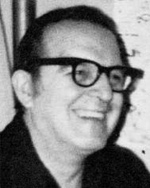
Charles Eber "Chic" Stone was an American comic book artist best known as one of Jack Kirby's Silver Age inkers, including his landmark run of Fantastic Four.

Kevin Nowlan is an American comics artist who works as a penciler, inker, colorist, and letterer. He has been called "one of the few artists who can be called 'artists's artist'", a master of the various disciplines of comic production, from "design to draftsmanship to dramatics".

Captain Victory is a comic book originally created, written and drawn by Jack Kirby. It was first published by American comic book publisher Pacific Comics in 1981. Kirby agreed to create a comic for the fledgling publisher because Pacific promised him full creative control, and ownership of the characters.

Ivan Reis is a Brazilian comics artist. He is known for his work on comic books such as Dark Horse Comics' Ghost, Marvel Comics' Captain Marvel and Avengers Icons: The Vision and DC Comics' Action Comics, Green Lantern and Aquaman series. According to collaborator Geoff Johns, Reis's drawing style resembles those of Alan Davis and Neal Adams.
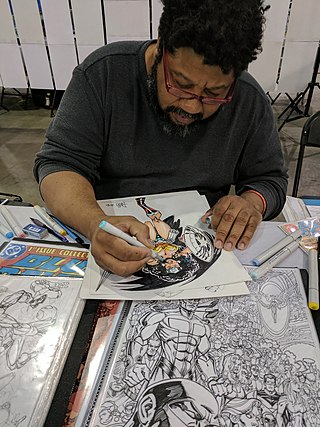
Paris Cullins is an American comics artist best known for his work on DC Comics' Blue Devil and Blue Beetle and Marvel Comics' Hyperkind.
Joyce Chin is a comic book penciler, inker, colorist, and cover artist. She has created content under the Marvel Comics, DC Comics, Dynamite Comics, Image Comics, Dark Horse Comics, and IDW Publishing labels. A large portion of Chin's work has been in creating comic book covers.
References
- ↑ Book, Comic (May 25, 2011). "Kirby: Genesis #0". Comic Book Roundup. Archived from the original on February 4, 2017.
- ↑ Tano, Duy (May 26, 2011). "Comics Cube! Reviews: KIRBY: GENESIS #0". Comics Cube Review. Archived from the original on February 4, 2017.
- ↑ "1999 Will Eisner Comic Industry Award Nominees and Winners". Hahn Library Comic Book Awards Almanac. Archived from the original on July 25, 2012.
- ↑ "1990s Eisner Award Recipients". San Diego Comic-Con International. 2013. Archived from the original on October 29, 2013. Retrieved February 1, 2014.
- 1 2 3 4 Félix, Amanda (February 1, 2014). "Jackson Herbert – I". Espaço Experimental. Archived from the original on February 4, 2017.
E foi quando eu descobri que dava pra viver de quadrinhos, trabalhar com quadrinhos. Então, foi a partir daí que eu passei a acreditar.
- 1 2 Felga, Coveiro (February 7, 2010). "Jackson Herbert Interview". Universo Marvel 616 . Archived from the original on February 4, 2017.
Minhas principais influencias foram Jim Lee, Greg Capullo e Mark Silvestri. Atualmente tenho influências de Mike Deodato jr., Brian Hitch, Lee Bermejo, Frank Frazetta e Ivan Reis...Conheci o pessoal do Made in PB no ano 2000...e até hoje sou membro efetivo do grupo...eu ja estava com o pessoal do Made in PB nessa época, e tive acesso a essa palestra
- ↑ Vieira, Antônio (January 30, 2017). "Semana Nacional de Quadrinhos 2017". Jornal da Paraíba. TV Cabo Branco. Archived from the original on February 5, 2017.
- 1 2 Sadovski, Roberto (September 11, 2015). "Comix Show #02 – Jack Herbert". Conexão Comix. Comix Book Shop (2). Archived from the original on February 4, 2017.
Me formei em Administração.
- ↑ "Jackson Herbert". Dicionários das Artes Visuais na Paraíba. Archived from the original on February 4, 2017. Retrieved February 4, 2017.
- ↑ "Echoes of Dawn". Trepidation Comics. Archived from the original on February 4, 2017.
- ↑ "Painkiller Jane". Jack Herbert. Archived from the original on February 6, 2017.
- ↑ "Painkiller Jane". Jack Herbert. Archived from the original on February 6, 2017.
- ↑ "New Battlestar Galactica Season Zero". Dynamite Entertainment. Archived from the original on February 6, 2017.
- ↑ "Jesse James is a Dead Man". Comic Burst. Archived from the original on February 6, 2017.
- ↑ George, Richard (August 11, 2007). "Interview: Alex Ross Returns to Marvel". IGN. Archived from the original on February 2, 2014.
- ↑ Weiland, Jonah (August 14, 2007). "Ross' Return = Avengers/Invaders". Comic Book Resources. Archived from the original on May 2, 2008.
- ↑ Brady, Matt (August 14, 2007). "Alex Ross Talks Avengers/Invaders". Newsarama. Archived from the original on September 6, 2007.
- ↑ "Avengers Invaders". Good Reads. Archived from the original on February 6, 2017.
- ↑ "PROJECT SUPERPOWERS: MEET THE BAD GUYS #4 (OF 4)". Dynamite Entertainment. Archived from the original on February 6, 2017.
- ↑ "Red Sonja". Dynamite Entertainment. Archived from the original on February 9, 2017.
- ↑ "Queen Sonja #6". Dynamite Entertainment. Archived from the original on February 6, 2017.
- ↑ "Black Terror #12". Dynamite Entertainment. Archived from the original on February 6, 2017.
- ↑ "Kirby Genesis". Dynamite Entertainment. Archived from the original on February 6, 2017.
- ↑ Félix, Amanda (February 1, 2014). "Jackson Herbert – II (ed. 1/2/2014)". Espaço Experimental. Comix Book Shop (2).[ dead link ]
- ↑ "Jackson Herbert". Studio Made in PB. Archived from the original on February 5, 2017.
- ↑ "Miss Fury #1". Dynamite Entertainment. Archived from the original on February 6, 2017.
- ↑ "The Shadow #7". Dynamite Entertainment. Archived from the original on February 6, 2017.
- ↑ "The Bionic Man vs The Bionic Woman #1". Dynamite Entertainment. Archived from the original on February 6, 2017.
- ↑ "Batman Superman: Futures End #1 - Review". Barman News. Archived from the original on February 6, 2017.
- ↑ "Superman #31 - Review". CBR. Archived from the original on February 6, 2017.
- ↑ "Secret Origins #5 - Review". Batman News. Archived from the original on February 6, 2017.
- ↑ "Superman: Doomed #2". CBR. Archived from the original on February 6, 2017.
- ↑ "Superman Wonder Woman #12". DC Comics. Archived from the original on February 6, 2017.
- ↑ "The New 52: Futures End #45". All-Comic.com. Archived from the original on February 6, 2017.
- ↑ "Titans Hunt #3 - Review and Spoilers". Weird Science. Archived from the original on February 6, 2017.
- ↑ "Green Lanterns Corps: Edge of Oblivion #6". DC Comics. Archived from the original on February 6, 2017.
- ↑ "Green Lanterns #6". DC Comics. Archived from the original on February 6, 2017.
- ↑ "Green Lanterns #7". DC Comics. Archived from the original on February 6, 2017.
- ↑ "Superwoman #6 (Preview)". CBR. Archived from the original on February 6, 2017.